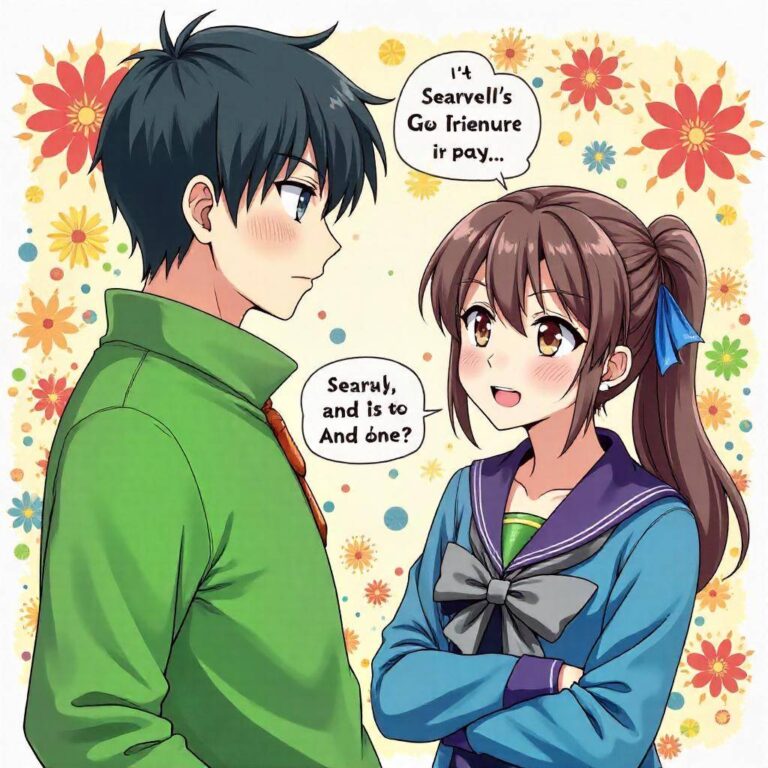Reader’s Question:
What was the reception like among anime and Gundam fans when V Gundam was originally aired? I’ve been watching it weekly after about 30 years, and I can’t help but think that Rika Matsumoto’s talent is underutilized, and the protagonist seems a bit like a shota-con character. I find
myself just zoning out while watching it each week.
Understanding the Reception of V Gundam Among Anime and Gundam Fans
When “V Gundam” first aired in 1993, it arrived at a time when the Gundam franchise was undergoing significant changes. The series, created by Yoshiyuki Tomino, is often cited as one of the more controversial entries in the Gundam universe. It stands apart from its predecessors and successors, not only in terms of its narrative but also in its artistic choices and character development. As a fan who has been engaging with this series weekly after nearly three decades, I understand the mixed feelings that accompany this show.
Background Context
“V Gundam” is set in a future where humanity has colonized space, and it reflects the ongoing themes of war and its consequences that are hallmark traits of the Gundam series. However, “V Gundam” diverged from the more optimistic or heroic narratives found in other entries by presenting a darker, more chaotic universe. The series follows Uso Ewin, a young boy who ends up fighting against the Zanscare Empire, while also grappling with the emotional and psychological toll that war takes on him and those around him. When it first aired, the reception was far from favorable among many long-time fans of the franchise. Some felt that the design of the mobile suits (MS) was bizarre, such as the peculiar designs of the Zanscare MS which, as one commenter remarked, resembled something out of an alien movie rather than a traditional Gundam series. The sentiment of “What is this?” echoed through the community as fans grappled with the aesthetic changes that seemed to betray the franchise’s established visual language.
Cultural Significance and Industry Trends
“V Gundam” was released during a critical period in anime history, a time when creators were experimenting with various styles and storytelling techniques. The 1990s saw an explosion of creativity, but also a saturation of content in the mecha genre. As new series emerged, fans began to compare them with classic titles that defined the genre’s tropes. The decision by Tomino to infuse “V Gundam” with darker themes and a more cynical view of humanity marked a shift in tone that left many fans disoriented. Interestingly, this divergence in storytelling is reflected in the cultural landscape of the time. The early 90s in Japan were marked by economic stagnation, leading to a generation of anime that began exploring themes of despair and futility. “V Gundam” embodies this sentiment through its portrayal of pointless loss during warfare, where even the most hopeful characters face tragic ends. This narrative choice resonates with viewers who have experienced or observed the unpredictability of life, war, and loss.
Character Development and Storytelling Techniques
The protagonist, Uso Ewin, has been described as a bit of a shota-con character, which raises questions about the intended audience and the character’s development. Uso embodies the innocence of youth juxtaposed against the harsh realities of war. However, this characterization didn’t resonate with everyone. Fans seeking a traditional hero’s journey might find his portrayal lacking depth or relatability. Some viewers may drift off during episodes because they are not emotionally invested in a character who perpetually faces dire situations without adequate growth. Opposing this, characters like Katagina and the infamous Shurako team exemplify the darker side of the series. Katagina is notorious for her ruthless nature, and her actions resonate with fans of the “bad-guy” archetype. The guillotine execution and the portrayal of the Shurako team as harbingers of doom paint a picture of a world fraught with moral ambiguity. This marks a significant departure from the black-and-white representations of good and evil that were more common in earlier entries. Such character depth, while fascinating, can also alienate viewers used to clear-cut narratives. The struggle for survival and the moral dilemmas presented challenge fans to consider deeper themes of sacrifice and futility in war, thus eliciting varying reactions based on individual viewer experiences and expectations.
Aesthetic Choices and Design Critique
Visually, “V Gundam” stands out for its unconventional designs. The Zanscare MS designs, described as hetekoririn or “strange,” provoked strong reactions from fans. Many considered them too far removed from the traditional Gundam aesthetic, comparing them to whimsical creations that seemed more suited for a children’s show than a mature narrative about war. This critique reflects a broader debate within the anime community about artistic expression versus fan expectations. As one commenter humorously draws a parallel to a movie filled with absurdities, it highlights the inherent risk of diverging from established norms. This kind of bold artistic choice can alienate longtime fans while attracting a new generation of viewers who appreciate experimental storytelling.
Personal Experiences and Observations
Reflecting on my own experiences with “V Gundam,” I can relate to the feelings of disconnection. Approaching the series with the weight of expectations based on previous entries, I sometimes found myself zoning out during episodes. The tonal shifts, coupled with character arcs that felt unresolved or unfulfilling, made it difficult to remain engaged. Yet, there are moments that shine through the chaos. The emotional weight of certain scenes can resonate deeply. For instance, when Uso faces the consequences of his actions, it serves as a poignant reminder of the human cost of conflict. Such moments invite viewers to reflect on their own lives and the complexities of relationships, loss, and sacrifice. It’s also worth noting that humor plays a surprising role in “V Gundam.” As a fan of both stand-up and manzai comedy, I appreciated the moments that injected levity into the dark narrative. The juxtaposition of humor against serious themes can serve to highlight the absurdities of life, a testament to Tomino’s multifaceted storytelling approach.
Actionable Insights for Viewers and Creators
For anime viewers, especially those navigating through series with mixed receptions like “V Gundam,” a few takeaways can enhance the experience: 1. Approach with an Open Mind: Like many works of art, anime often reflects the context in which it was created. Understanding the historical and cultural backdrop can lead to a richer viewing experience. 2. Embrace Discomfort: It’s okay to feel disconnected from characters or narratives that diverge from your expectations. Allow yourself to ponder why certain elements trigger these feelings, as they can lead to deeper reflections on storytelling. 3. Engage with the Community: Discussions with fellow fans can offer different perspectives and insights into the series. Online forums, social media groups, or local anime clubs can provide a space to share your thoughts and hear others’ experiences. For creators, “V Gundam” serves as a reminder of the importance of balancing innovation with audience expectations. While experimentation is crucial for growth in storytelling, understanding your audience’s connection to established norms can guide how far you can push boundaries.
Final Thoughts
Ultimately, “V Gundam” represents a bold entry in the Gundam franchise, embodying the complexities of storytelling and character development. The mixed reception it garnered reflects the challenges of creating impactful narratives in a saturated genre. Whether it’s the peculiar designs or the morally ambiguous characters, the series provokes thought and discussion. As I continue to watch, I find myself reflecting on the nature of conflict, the costs of war, and the absurdity of life—all while embracing the humor that weaves through it. If you’re like me and finding it tough to engage fully with the series, take a moment to appreciate the journey, both the ups and downs, and remember that every series offers lessons about storytelling, culture, and the human experience. I’d love to hear your thoughts and experiences with “V Gundam” or any other anime that has challenged your perspectives. What series do you believe pushed the envelope, and how did it resonate with you? Let’s keep the conversation going!



